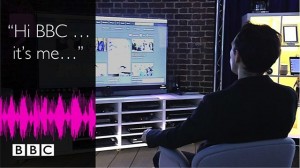
After more than 40 years of operation, DTVE is closing its doors and our website will no longer be updated daily. Thank you for all of your support.
BBC builds proof-of-concept voice sign-in and search for iPlayer
 The BBC has built a proof-of-concept version of its iPlayer on-demand platform that allows individuals to sign in using their unique voiceprint and search for content using voice, in partnership with Microsoft.
The BBC has built a proof-of-concept version of its iPlayer on-demand platform that allows individuals to sign in using their unique voiceprint and search for content using voice, in partnership with Microsoft.
The internal experiment involved creating a prototype that allowed users to sign in to iPlayer only using their voiceprint. Once signed in, individuals could view the normal mix of editorially curated and personalised recommendations.
The prototype also allowed users to select for content by talking to their device, for example by asking it to “show me something funny” to bring up a selection of comedy shows, or by asking “what’s going on in the world?” to bring up the BBC News channel. Users could also asked for the device to play specific programmes.
The proof of concept involved using software to recognise the individual characteristics of a user’s voice, processing that information and then matching it to a sample of your voice stored in the cloud before signing in the user automatically.
“What we have built here is only a proof of concept and we are still at the very early stages for voice interfaces. Our experiment focussed on getting the basics right – creating a working internal prototype that allows you to sign in using your voiceprint. Once signed in, you can see all of the editorially curated programmes and personalised recommendations that you normally would,” said Cyrus Saihan, head of digital partnerships, distribution and business development at the BBC, in a blog post.
Saihan said that, in the future, voice-enabled personalisation could also be used to enable follow-on type service, where users were asked by their TV if they wanted to continue watching something they had been viewing on a tablet, based on voice recognition. Further in the future, the technology could also be used to present a selection of recommendations based on a mix of different family members in a room, or to suggest content based on the mood of the viewer as reflected in his or her voice.


